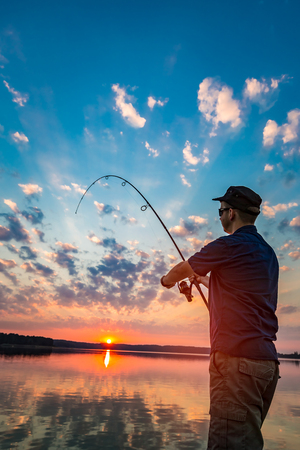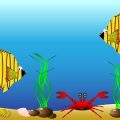Introduction to Ice Fishing in India
Ice fishing might evoke images of frozen lakes in Scandinavia or North America, but India offers its own distinctive twist on this chilly adventure. With its vast and varied geography, from the towering Himalayas to serene high-altitude valleys, India presents a unique canvas for ice fishing enthusiasts. This activity is not just about braving the cold; it is a thrilling blend of outdoor sport and cultural exploration. Local traditions, warm hospitality, and breathtaking winter landscapes turn every ice fishing trip into a memorable experience. In India, ice fishing is more than just angling—it’s an immersion into the country’s rich tapestry of nature and heritage, appealing to thrill-seekers and culture lovers alike.
2. Best Ice Fishing Locations across India
When it comes to ice fishing in India, few adventures can match the thrill of dropping your line into a frozen Himalayan lake. Whether you are a seasoned angler or a curious first-timer, the northern states offer some truly unique destinations for this winter activity. Let’s explore the most popular and scenic ice fishing spots, stretching from the breathtaking valleys of Jammu & Kashmir to the untouched wilderness of Himachal Pradesh and Uttarakhand.
Top Ice Fishing Destinations in India
| Location | State | Best Season | Key Highlights |
|---|---|---|---|
| Dal Lake | Jammu & Kashmir | December – February | Iconic Shikara views, local Kashmiri hospitality, abundant trout and carp |
| Pangong Tso | Ladakh (J&K) | January – March | Breathtaking high-altitude setting, crystal-clear ice, adventure vibes |
| Tso Moriri Lake | Ladakh (J&K) | Late December – February | Pristine landscape, migratory birds, peaceful remote location |
| Chandratal Lake | Himachal Pradesh | January – February | Crescent-shaped wonder, serene silence, challenging access adds thrill |
| Naini Lake | Uttarakhand | Late December – January | Picturesque hill town, easy access, mix of local and tourist anglers |
| Sattal Lake | Uttarakhand | December – January | Mystical forest surroundings, multiple interconnected lakes, good variety of fish species |
| Manasbal Lake | Kashmir Valley (J&K) | December – February | Lesser-known gem, peaceful ambiance, traditional Kashmiri angling techniques on display |
The Himalayan Ice Fishing Experience: Local Flavour & Culture
The real charm of ice fishing in India is not just the catch but the entire experience—think sipping hot kahwa on the frozen banks or mingling with local anglers who share age-old tips. The winter months transform these lakes into surreal arenas where nature lovers gather for both sport and camaraderie. Each destination brings its own flavour: Ladakh’s rugged beauty attracts adventure seekers; Kashmir’s lakes offer rich traditions; while Himachal and Uttarakhand provide tranquil escapes for those looking to disconnect from city life.
Insider Tip:
If you’re keen to try your luck at one of these locations, always check local weather conditions and consult with regional guides. Many lakes freeze unpredictably—so safety first! For an authentic Indian ice fishing experience, pair your trip with local winter festivals or food markets to get a true taste of mountain culture.
![]()
3. Season and Weather: When to Go Ice Fishing
Timing is everything when it comes to ice fishing in India, especially if you want a true “paisa vasool” (worth the money) experience. The prime season for ice fishing in our Himalayan regions—think Jammu & Kashmir, Himachal Pradesh, and parts of Uttarakhand—typically starts from late December and extends till early March. During these months, lakes like Dal Lake, Pangong Tso, and Tso Moriri freeze solidly enough for safe angling.
Current Weather Trends:
In recent years, winters have become a bit unpredictable thanks to climate change. Some winters see earlier snowfall while others might be slightly delayed. It’s always best to check local weather updates or connect with fellow anglers on WhatsApp groups before heading out. Remember, safety first—never venture onto thin or freshly frozen ice.
Regional Tips for Desi Anglers
- Kashmir Valley: January is usually the coldest with maximum ice thickness—perfect for burbot and trout.
- Leh-Ladakh: February offers clear skies but biting winds, so layer up! Ice here is often at its thickest in mid-February.
- Himachal Pradesh: Lakes near Manali and Lahaul-Spiti are best tackled from late January onwards.
Pehle Sahi Jaankari Lo (Get Local Advice First)
Before planning your trip, speak with local guides or experienced anglers—many will share tips on the best time slots (“subah subah ya shaam ko”—early morning or evening) and how to judge ice safety desi-style, using local tools or traditional knowledge.
In summary, always plan your ice fishing trip during peak winter months, keep an eye on the latest weather updates, and don’t forget to tap into local expertise. This way, you’ll not only land the big catch but also enjoy a safe and unforgettable Himalayan adventure!
4. Local Fish Species and Highlight Catches
India’s ice fishing scene is full of unique native fish species, each with its own special place in local angling culture. Whether you’re casting your line in the frozen lakes of Kashmir or braving the winter chill in Himachal Pradesh, understanding which fish you might catch—and why they matter—will take your experience to another level.
Popular Native Fish Under the Ice
| Fish Species | Local Name | Region Found | Why Its Prized |
|---|---|---|---|
| Snow Trout | Schizothorax | Kashmir, Uttarakhand | Mild flavour, firm flesh, culturally significant for Kashmiri cuisine; seen as a badge of skill for anglers |
| Maharaja Trout (Brown Trout) | Trout Machhli | Kashmir, Himachal Pradesh | Introduced by British, highly prized for sporting fight and taste; status symbol among local fishing clubs |
| Rainbow Trout | N/A (Imported) | Kashmir, Himachal Pradesh | Lively fight and delicate texture; popular among both tourists and locals seeking a premium catch |
| Himalayan Mahseer (rarely under ice) | Golden Mahseer | Occasionally in colder rivers/lakes with ice cover in North India | Cultural icon, considered the “Tiger of Indian Rivers”; catching one under ice is a once-in-a-lifetime event! |
| Mirror Carp/Common Carp | Ghasher/Grass Carp | Kashmir valley lakes (Dal, Wular) | Sought after for size and strength; key ingredient in local winter feasts like “Rogan Josh” with fish twist! |
Cultural Importance & Angler’s Pride
Certain catches are more than just dinner—they’re a story to bring home. In Kashmiri culture, landing a giant snow trout is a symbol of patience and good fortune. For Himachali youth, nabbing a hefty brown trout can mean bragging rights for the entire winter season! Community feasts featuring freshly caught carp or trout are common during festivals like Lohri or Magh Mela, making these catches central to local celebration and tradition.
Pro Tips from Local Anglers:
- Bait Choice: Snow trout respond well to natural baits like worms or maggots; trout love spinners and small lures.
- Trophy Size: A snow trout above 1 kg or a brown trout over 2 kg will get you instant respect at any Indian angling club.
Hooking one of these native legends? Don’t forget—always follow local conservation guidelines so future generations can share the thrill too!
5. Traditional Practices and Community Insights
When it comes to ice fishing in India, the experience is not just about catching fish—it’s about embracing the vibrant traditions and community spirit that make each trip memorable. In the Himalayan belt, particularly in Kashmir and Himachal Pradesh, local customs play a big role in shaping the adventure. Before venturing onto frozen lakes like Dal Lake or Tso Moriri, it’s common for anglers to consult with village elders, who share wisdom on safe ice thickness, weather patterns, and the best timings rooted in generations of observation.
Regional Food: Fuel for the Chilly Adventure
No Indian ice fishing trip is complete without indulging in hearty regional cuisine. Fishermen often start their day with steaming cups of Kahwa (a spiced Kashmiri tea) or butter chai, which helps beat the biting cold. During breaks, locals gather around portable stoves to cook up fresh-caught trout with aromatic spices or share homemade rotis, pickles, and even piping hot Rajma Chawal. Sharing food strengthens camaraderie among anglers and adds warmth to freezing surroundings.
The Spirit of Josh: Enthusiasm on Ice
What truly sets Indian ice fishing apart is the unmistakable “josh”—the energetic enthusiasm that locals bring to every outing. Whether it’s singing folk songs while drilling holes or friendly banter as the sun rises over snow-clad peaks, this spirit transforms a simple fishing trip into a celebration. Villagers often organize informal contests to see who lands the biggest catch or cooks the tastiest fish curry right on the ice.
Community Bonding & Cultural Exchange
Many communities welcome visiting anglers with open arms, offering insights into traditional techniques like using hand-made bamboo rods and locally crafted bait. Elders recount stories of legendary catches from winters past, passing down secrets that make each session special. This sense of belonging ensures that even first-timers feel like part of an extended family by the end of their journey.
A Uniquely Indian Experience
Ice fishing in India is a blend of age-old customs, culinary delights, and spirited josh—turning every trip into more than just a quest for fish. It becomes a living memory shaped by laughter, shared meals, and bonds forged on shimmering Himalayan ice—a uniquely Indian adventure you’ll never forget.
6. Essential Gear & Tips: Indian Style
When you set out to experience ice fishing in India, whether in the frozen lakes of Kashmir or the high-altitude ponds of Himachal Pradesh, your gear and approach need to match local conditions. Here’s a desi run-down for both beginners and seasoned anglers:
Must-Have Fishing Tackle
Start with a sturdy, short ice fishing rod and a reliable spinning reel—ideally one that can handle sudden temperature drops. For bait, maggots and earthworms work wonders for Himalayan trout, but don’t hesitate to use local dough balls (“atta goli”) or cheese cubes, which often attract curious fish. Pack an auger or a hand drill; many Indian anglers also use homemade chisel tools (a true jugaad) for making holes in thinner ice.
Jugaad & Local Hacks
- Carry a steel bowl or large spoon to clear slush from your hole—it’s cheap, effective, and easily found in any Indian kitchen.
- Old jute sacks can double up as insulation to sit on while waiting for a bite.
- If you don’t have fancy depth finders, use a small weight attached to your line to manually check the water depth and locate fish zones.
Clothing: Layer Up Desi Style
The Indian Himalayas can get bone-chillingly cold. Layering is key: Start with thermal inners, add thick woollens (try Kashmiri pherans for extra warmth), and top it off with a waterproof jacket. Don’t forget woolen gloves, socks, and a monkey cap (“balaclava”). Gumboots are highly recommended for wet and icy banks.
Safety & Comfort Tips
- Always check local weather forecasts before heading out; sudden snowfalls are common in winter months.
- Never fish alone—bring along a friend or join local angling groups for safety and expert tips.
- Cups of hot chai in a thermos are not just comforting—they keep you warm and energized through long sessions!
Desi Wisdom for Beginners & Pros
If you’re new to ice fishing, observe how local fishermen do it. Their time-tested tricks—like using bright-coloured floats made from recycled plastic or picking the best spots based on sun exposure—are invaluable. For pros, try experimenting with hybrid rigs combining Indian bait with imported lures for best results.
With the right gear, some classic jugaad, and these community-driven tips, your Indian ice fishing adventure will be safe, successful, and truly memorable!
7. Responsible Fishing & Conservation
As ice fishing gains popularity in India’s high-altitude regions, it is crucial for anglers and adventure seekers to embrace responsible fishing practices that honour both nature and local traditions. The Himalayan lakes and rivers, from Kashmir to Arunachal Pradesh, are not only rich in aquatic life but also form the backbone of local communities’ livelihoods and cultural heritage.
Best Practices for Sustainable Angling
Always use environmentally safe gear—avoid plastic baits and non-biodegradable lines that can harm the fragile ecosystem. Adhere strictly to catch-and-release policies where applicable, especially when targeting native species like snow trout or golden mahseer, which are vital for maintaining biodiversity. Never leave behind litter; carry all waste out with you, as even small items can have a large impact on these pristine environments.
Respecting Local Community Conventions
Engage respectfully with local fishers and indigenous groups who have fished these icy waters for generations. Ask about community guidelines before you cast your line—some areas may have sacred zones or seasonal restrictions based on traditional wisdom or religious beliefs. Supporting local guides not only enriches your experience but also channels economic benefits directly into mountain villages.
Upcoming Conservation Efforts
With climate change impacting snowfall patterns and glacial melt, several Indian states are now launching initiatives to monitor fish populations, regulate tourist numbers during peak season, and promote eco-friendly angling festivals. Stay updated about new rules from authorities such as the Jammu & Kashmir Fisheries Department or Arunachal Pradesh Tourism Board. By participating in clean-up drives or educational programmes, you can contribute to preserving India’s unique icy waterways for future generations of anglers.
Tight Lines, Clean Waters!
Whether you’re drilling your first hole in Dal Lake’s winter crust or swapping stories by Sela Pass’ frozen banks, remember: every responsible action counts towards keeping these majestic ice fishing spots alive and thriving for years to come.


